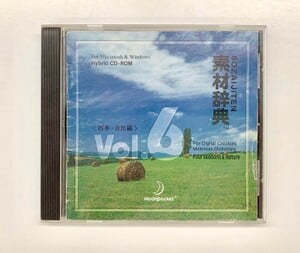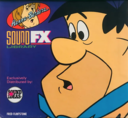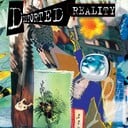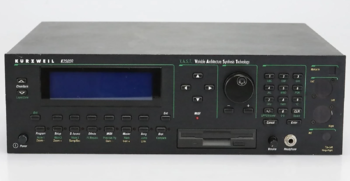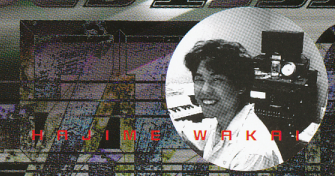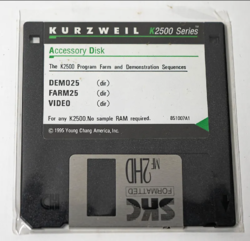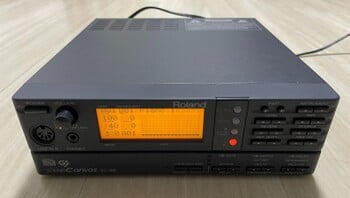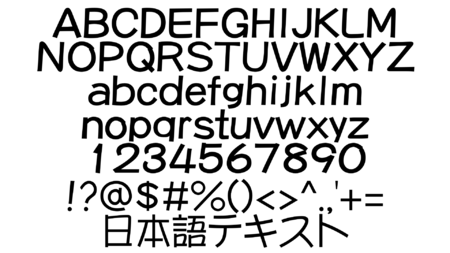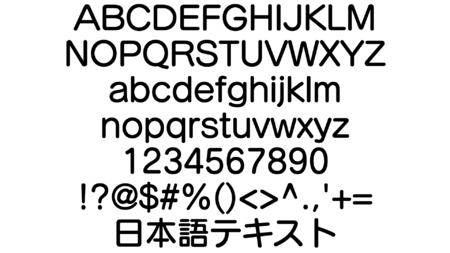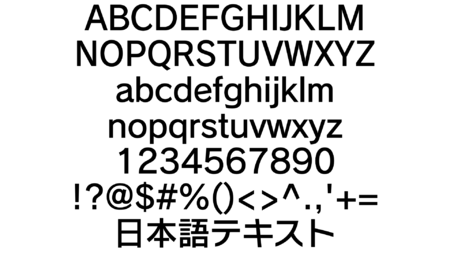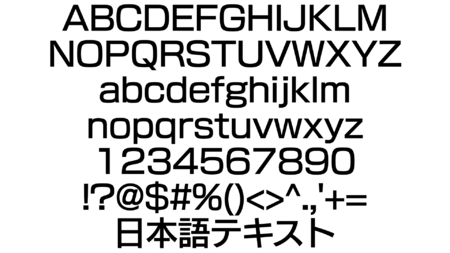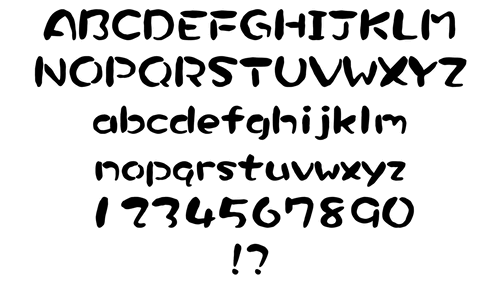Assets used in the Pikmin series: Difference between revisions
m (→Kurzweil K2500) |
(→Audio: Lot) |
||
| Line 287: | Line 287: | ||
Similar to graphics, creating game audio often involves the sampling of various sound libraries. The games within the ''Pikmin'' series are a good example, where the vast majority of sounds can be sourced back to a number of different commercially-released products. These products are used to create the individual instrument samples and sound effects in the games, as well as long pieces of streamed music. All of the music in [[Music in Pikmin|''Pikmin'']], [[Music in Pikmin 2|''Pikmin 2'']], and [[Music in Pikmin 3|''Pikmin 3'']] use audio from digital instruments and synthesizers; instances of musicians performing live on real acoustic instruments are highly uncommon in the games. The [[Music in Pikmin 3#Side Stories|new music]] composed by Babi for {{p3d}} is one of the very few occasions where this was done.{{cite web|https://www.reddit.com/r/Pikmin/comments/15g0eac/email_i_received_from_babi_from_my_inquiry/|Babi's response to an e-mail inquiry|Reddit}} | Similar to graphics, creating game audio often involves the sampling of various sound libraries. The games within the ''Pikmin'' series are a good example, where the vast majority of sounds can be sourced back to a number of different commercially-released products. These products are used to create the individual instrument samples and sound effects in the games, as well as long pieces of streamed music. All of the music in [[Music in Pikmin|''Pikmin'']], [[Music in Pikmin 2|''Pikmin 2'']], and [[Music in Pikmin 3|''Pikmin 3'']] use audio from digital instruments and synthesizers; instances of musicians performing live on real acoustic instruments are highly uncommon in the games. The [[Music in Pikmin 3#Side Stories|new music]] composed by Babi for {{p3d}} is one of the very few occasions where this was done.{{cite web|https://www.reddit.com/r/Pikmin/comments/15g0eac/email_i_received_from_babi_from_my_inquiry/|Babi's response to an e-mail inquiry|Reddit}} | ||
Since there is a history of many different composers and sound effect programmers contributing to the games, there is a large variety of synthesizers and sample libraries that have been used. Listed below are all of these currently known products. | Since there is a history of many different composers and sound effect programmers contributing to the games, there is a large variety of synthesizers and sample libraries that have been used. Listed below are all of these currently known products. A detailed list of the specific songs they are used in can be viewed [https://docs.google.com/spreadsheets/d/1s5wRceP34gaPr-CkNSnnlaCSEID5HjWTX4TSR_OxeqA/edit?usp=sharing here]. | ||
{| class="wikitable sortable mw-collapsible mw-collapsed" | {| class="wikitable sortable mw-collapsible mw-collapsed" | ||
! colspan="10" | List of music | ! colspan="10" | List of products and sources used for music | ||
|- | |- | ||
! Product || Image || | ! Product || Image || Year || Format || Used By || [[File:Pikmin (game) icon.png|24px]] || [[File:Pikmin 2 icon.png|24px]] || [[File:Pikmin 3 icon.png|24px]] || [[File:Pikmin 4 icon.png|24px]] || [[File:Hey! Pikmin icon.png|24px]] | ||
|- | |||
! Kurzweil K2500R | |||
| [[File:Kurzweil K2500R.png|128px]] || 1996 || Hardware synthesizer || Hajime Wakai || style="background-color:#d7ffc9"|Used || style="background-color:#d7ffc9"|Used || style="background-color:#d7ffc9"|Used || style="background-color:#d7ffc9"|Used || style="background-color:#ffd1d1"|Absent | |||
|- | |- | ||
! Roland SC-88 | ! Roland SC-88 | ||
| [[File:Roland SC-88.jpg|128px]] | | [[File:Roland SC-88.jpg|128px]] || 1994 || Hardware synthesizer || Hajime Wakai || style="background-color:#d7ffc9"|Used || style="background-color:#d7ffc9"|Used || style="background-color:#d7ffc9"|Used || style="background-color:#ffd1d1"|Absent || style="background-color:#ffd1d1"|Absent | ||
| 1994 | |- | ||
! Yamaha S90 | |||
| [[File:Yamaha S90.jpg|128px]] || 2002 || Hardware synthesizer || Kazumi Totaka || style="background-color:#ffd1d1"|Absent || style="background-color:#d7ffc9"|Used || style="background-color:#ffd1d1"|Absent || style="background-color:#ffd1d1"|Absent || style="background-color:#ffd1d1"|Absent | |||
|- | |||
! KORG TRITON STUDIO | |||
| [[File:KORG TRITON STUDIO.jpg|128px]] || 1999 || Hardware synthesizer || Asuka Hayazaki || style="background-color:#ffd1d1"|Absent || style="background-color:#ffd1d1"|Absent || style="background-color:#d7ffc9"|Used || style="background-color:#ffd1d1"|Absent || style="background-color:#ffd1d1"|Absent | |||
|- | |||
! Yamaha PLG150-DX | |||
| [[File:Yamaha PLG150 DX.png|128px]] || 1999 || Plug-in board || Kazumi Totaka || style="background-color:#ffd1d1"|Absent || style="background-color:#d7ffc9"|Used || style="background-color:#ffd1d1"|Absent || style="background-color:#ffd1d1"|Absent || style="background-color:#ffd1d1"|Absent | |||
|- | |||
! Yamaha PLG150-VL | |||
| [[File:Yamaha PLG150 VL.png|128px]] || 1999 || Plug-in board || Kazumi Totaka || style="background-color:#ffd1d1"|Absent || style="background-color:#d7ffc9"|Used || style="background-color:#ffd1d1"|Absent || style="background-color:#ffd1d1"|Absent || style="background-color:#ffd1d1"|Absent | |||
|- | |||
! InVision Lightware 1 | |||
| [[File:InVision Lightware 1.jpg|128px]] || 1989 || AKAI CD-ROM || Hajime Wakai || style="background-color:#ffd1d1"|Absent || style="background-color:#d7ffc9"|Used || style="background-color:#ffd1d1"|Absent || style="background-color:#ffd1d1"|Absent || style="background-color:#ffd1d1"|Absent | |||
|- | |||
! Series 4000 Hollywood Sound FX | |||
| [[File:Sound Ideas Series 4000 Hollywood Sound Effects Library.jpg|128px]] || 1989 || Audio CD-ROM || N/A || style="background-color:#ffd1d1"|Absent || style="background-color:#d7ffc9"|Used || style="background-color:#d7ffc9"|Used || style="background-color:#ffd1d1"|Absent || style="background-color:#ffd1d1"|Absent | |||
|- | |||
! SampleCell II CD-ROM Library | |||
| [[File:Digidesign SampleCell II CD-ROM Library 1.jpg|128px]] || 1991 || SampleCell CD-ROM || N/A || style="background-color:#d7ffc9"|Used || style="background-color:#d7ffc9"|Used || style="background-color:#ffd1d1"|Absent || style="background-color:#ffd1d1"|Absent || style="background-color:#ffd1d1"|Absent | |||
|- | |||
! Series 6000 The General Sound FX | |||
| [[File:Sound Ideas Series 6000 The General Sound Effects Library.png|128px]] || 1992 || Audio CD-ROM || N/A || style="background-color:#ffd1d1"|Absent || style="background-color:#d7ffc9"|Used || style="background-color:#d7ffc9"|Used || style="background-color:#ffd1d1"|Absent || style="background-color:#ffd1d1"|Absent | |||
|- | |||
! Warner Bros. Sound FX | |||
| [[File:Sound Ideas Warner Bros Sound Effects Library.jpg|128px]] || 1992 || Audio CD-ROM || N/A || style="background-color:#ffd1d1"|Absent || style="background-color:#d7ffc9"|Used || style="background-color:#ffd1d1"|Absent || style="background-color:#ffd1d1"|Absent || style="background-color:#ffd1d1"|Absent | |||
|- | |||
! Drums + Percussion Special Edit. | |||
| [[File:EastWest Drums and Percussion Special Edition.jpg|128px]] || 1992 || AKAI CD-ROM || Hajime Wakai || style="background-color:#ffd1d1"|Absent || style="background-color:#d7ffc9"|Used || style="background-color:#ffd1d1"|Absent || style="background-color:#ffd1d1"|Absent || style="background-color:#ffd1d1"|Absent | |||
|- | |||
! ZERO-G Ambient Volume 2 | |||
| [[File:ZERO-G ambient Volume 2.gif|128px]] || 1993 || AKAI CD-ROM || Hajime Wakai || style="background-color:#ffd1d1"|Absent || style="background-color:#d7ffc9"|Used || style="background-color:#ffd1d1"|Absent || style="background-color:#ffd1d1"|Absent || style="background-color:#ffd1d1"|Absent | |||
|- | |||
! Orchestral Colours | |||
| [[File:Best Service Peter Siedlaczeks Orchestral Colors.jpg|128px]] || 1993 || AKAI CD-ROM || Hajime Wakai || style="background-color:#ffd1d1"|Absent || style="background-color:#d7ffc9"|Used || style="background-color:#ffd1d1"|Absent || style="background-color:#ffd1d1"|Absent || style="background-color:#ffd1d1"|Absent | |||
|- | |||
! Synclavier Sampler Library Perc+ | |||
| [[File:ILIO Synclavier Sampler Library Percussion World and Orchestral.jpeg|128px]] || 1994 || AKAI CD-ROM || Kazumi Totaka || style="background-color:#ffd1d1"|Absent || style="background-color:#d7ffc9"|Used || style="background-color:#ffd1d1"|Absent || style="background-color:#ffd1d1"|Absent || style="background-color:#ffd1d1"|Absent | |||
|- | |||
! Bass Legends | |||
| [[File:Spectrasonics Bass Legends.jpg|128px]] || 1994 || CD-ROM || Kazumi Totaka || style="background-color:#ffd1d1"|Absent || style="background-color:#d7ffc9"|Used || style="background-color:#ffd1d1"|Absent || style="background-color:#ffd1d1"|Absent || style="background-color:#ffd1d1"|Absent | |||
|- | |||
! Ultra Gigapack | |||
| [[File:Best Service Ultra Gigapack.jpg|128px]] || 1995 || SampleCell CD-ROM || N/A || style="background-color:#d7ffc9"|Used || style="background-color:#d7ffc9"|Used || style="background-color:#ffd1d1"|Absent || style="background-color:#ffd1d1"|Absent || style="background-color:#ffd1d1"|Absent | |||
|- | |||
! Supreme Beats | |||
| [[File:Spectrasonics Supreme Beats.jpg|128px]] || 1995 || CD-ROM || N/A || style="background-color:#d7ffc9"|Used || style="background-color:#d7ffc9"|Used || style="background-color:#d7ffc9"|Used || style="background-color:#ffd1d1"|Absent || style="background-color:#ffd1d1"|Absent | |||
|- | |||
! Hollywood Edge Animal Trax | |||
| [[File:The Hollywood Edge Animal Trax.jpg|128px]] || 1996 || Audio CD-ROM || N/A || style="background-color:#ffd1d1"|Absent || style="background-color:#ffd1d1"|Absent || style="background-color:#d7ffc9"|Used || style="background-color:#ffd1d1"|Absent || style="background-color:#ffd1d1"|Absent | |||
|- | |||
! Ethnic Flavours | |||
| [[File:ZERO-G Ethnic Flavours.jpg|128px]] || 1996 || Audio CD-ROM || N/A || style="background-color:#ffd1d1"|Absent || style="background-color:#ffd1d1"|Absent || style="background-color:#d7ffc9"|Used || style="background-color:#ffd1d1"|Absent || style="background-color:#ffd1d1"|Absent | |||
|- | |||
! Advanced Orchestra | |||
| [[File:Best Service Peter Siedlaczeks Advanced Orchestra.jpg|128px]] || 1997 || AKAI CD-ROM || N/A || style="background-color:#ffd1d1"|Absent || style="background-color:#d7ffc9"|Used || style="background-color:#d7ffc9"|Used || style="background-color:#ffd1d1"|Absent || style="background-color:#ffd1d1"|Absent | |||
|- | |||
! Voices of Istanbul | |||
| [[File:QUp Arts Voices of Istanbul.png|128px]] || 2000 || Audio CD-ROM || Kazumi Totaka || style="background-color:#ffd1d1"|Absent || style="background-color:#d7ffc9"|Used || style="background-color:#ffd1d1"|Absent || style="background-color:#ffd1d1"|Absent || style="background-color:#ffd1d1"|Absent | |||
|- | |||
! Symphonic Orchestra | |||
| [[File:EastWest Symphonic Orchestra.jpg|128px]] || 2003 || Software instrument || Asuka Hayazaki || style="background-color:#ffd1d1"|Absent || style="background-color:#ffd1d1"|Absent || style="background-color:#d7ffc9"|Used || style="background-color:#d7ffc9"|Used || style="background-color:#ffd1d1"|Absent | |||
|- | |||
! Ra | |||
| [[File:East West Ra.jpg|128px]] || 2005 || Software instrument || Asuka Hayazaki || style="background-color:#ffd1d1"|Absent || style="background-color:#ffd1d1"|Absent || style="background-color:#d7ffc9"|Used || style="background-color:#ffd1d1"|Absent || style="background-color:#ffd1d1"|Absent | |||
|- | |||
! Stormdrum 2 | |||
| [[File:EastWest Stormdrum 2.jpg|128px]] || 2007 || Software instrument || Asuka Hayazaki || style="background-color:#ffd1d1"|Absent || style="background-color:#ffd1d1"|Absent || style="background-color:#d7ffc9"|Used || style="background-color:#ffd1d1"|Absent || style="background-color:#ffd1d1"|Absent | |||
|- | |||
! Omnisphere | |||
| [[File:Spectrasonics Omnisphere.png|128px]] || 2008 || Software instrument || Asuka Hayazaki || style="background-color:#ffd1d1"|Absent || style="background-color:#ffd1d1"|Absent || style="background-color:#d7ffc9"|Used || style="background-color:#ffd1d1"|Absent || style="background-color:#ffd1d1"|Absent | |||
|- | |||
! KONTAKT Factory Library | |||
| [[File:NI KONTAKT Factory Library.jpg|128px]] || 2010 || Software instrument || Atsuko Asahi || style="background-color:#ffd1d1"|Absent || style="background-color:#ffd1d1"|Absent || style="background-color:#d7ffc9"|Used || style="background-color:#ffd1d1"|Absent || style="background-color:#ffd1d1"|Absent | |||
|- | |||
! HALion One | |||
| [[File:Steinberg Cubase 4 HALion One.jpg|128px]] || 2006 || Software instrument || Atsuko Asahi || style="background-color:#ffd1d1"|Absent || style="background-color:#ffd1d1"|Absent || style="background-color:#d7ffc9"|Used || style="background-color:#ffd1d1"|Absent || style="background-color:#ffd1d1"|Absent | |||
|- | |||
! Logic Pro X | |||
| [[File:Apple Logic Pro X.jpg|128px]] || 2004 || DAW || Hajime Wakai || style="background-color:#ffd1d1"|Absent || style="background-color:#ffd1d1"|Absent || style="background-color:#d7ffc9"|Used || style="background-color:#ffd1d1"|Absent || style="background-color:#ffd1d1"|Absent | |||
|} | |||
{| class="wikitable sortable mw-collapsible mw-collapsed" | |||
! colspan="11" | List of products and sources used for sound effects | |||
|- | |||
! Product || Image || Year || Format || Used By || [[File:Pikmin (game) icon.png|24px]] || [[File:Pikmin 2 icon.png|24px]] || [[File:Pikmin 3 icon.png|24px]] || [[File:Pikmin 4 icon.png|24px]] || [[File:Hey! Pikmin icon.png|24px]] | |||
|- | |||
! Series 4000 Hollywood Sound FX | |||
| [[File:Sound Ideas Series 4000 Hollywood Sound Effects Library.jpg|128px]] | |||
| 1989 | |||
| Audio CD-ROM | |||
| N/A | |||
|style="background-color:#d7ffc9"|Used | |||
|style="background-color:#d7ffc9"|Used | |||
|style="background-color:#d7ffc9"|Used | |||
|style="background-color:#ffd1d1"|Absent | |||
|style="background-color:#ffd1d1"|Absent | |||
|- | |||
! E-MU Proteus/2 Orchestral | |||
| [[File:E-MU Proteus 2.jpg|128px]] | |||
| 1990 | |||
| Hardware synthesizer | | Hardware synthesizer | ||
| | | N/A | ||
|style="background-color:#d7ffc9"|Used | |||
|style="background-color:#d7ffc9"|Used | |||
|style="background-color:#ffd1d1"|Absent | |||
|style="background-color:#ffd1d1"|Absent | |||
|style="background-color:#ffd1d1"|Absent | |||
|- | |||
! SampleCell II CD-ROM Library | |||
| [[File:Digidesign SampleCell II CD-ROM Library 1.jpg|128px]] | |||
| 1991 | |||
| SampleCell CD-ROM | |||
| N/A | |||
|style="background-color:#d7ffc9"|Used | |||
|style="background-color:#d7ffc9"|Used | |||
|style="background-color:#ffd1d1"|Absent | |||
|style="background-color:#ffd1d1"|Absent | |||
|style="background-color:#ffd1d1"|Absent | |||
|- | |||
! Series 6000 The General Sound FX | |||
| [[File:Sound Ideas Series 6000 The General Sound Effects Library.png|128px]] | |||
| 1992 | |||
| Audio CD-ROM | |||
| N/A | |||
|style="background-color:#d7ffc9"|Used | |||
|style="background-color:#d7ffc9"|Used | |||
|style="background-color:#d7ffc9"|Used | |||
|style="background-color:#d7ffc9"|Used | |style="background-color:#d7ffc9"|Used | ||
|style="background-color:#ffd1d1"|Absent | |||
|- | |||
! Universal Studios Sound FX | |||
| [[File:Sound Ideas Universal Studios Sound Effects Library.png|128px]] | |||
| 1992 | |||
| Audio CD-ROM | |||
| N/A | |||
|style="background-color:#d7ffc9"|Used | |style="background-color:#d7ffc9"|Used | ||
|style="background-color:#d7ffc9"|Used | |style="background-color:#d7ffc9"|Used | ||
|style="background-color:#ffd1d1"|Absent | |||
|style="background-color:#ffd1d1"|Absent | |style="background-color:#ffd1d1"|Absent | ||
|style="background-color:#ffd1d1"|Absent | |style="background-color:#ffd1d1"|Absent | ||
|- | |- | ||
! | ! Warner Bros. Sound FX | ||
| [[File: | | [[File:Sound Ideas Warner Bros Sound Effects Library.jpg|128px]] | ||
| | | 1992 | ||
| | | Audio CD-ROM | ||
| | | N/A | ||
|style="background-color:#d7ffc9"|Used | |style="background-color:#d7ffc9"|Used | ||
|style="background-color:#d7ffc9"|Used | |style="background-color:#d7ffc9"|Used | ||
| Line 315: | Line 452: | ||
|style="background-color:#d7ffc9"|Used | |style="background-color:#d7ffc9"|Used | ||
|style="background-color:#ffd1d1"|Absent | |style="background-color:#ffd1d1"|Absent | ||
|- | |- | ||
! | ! Hanna-Barbera Sound FX | ||
| [[File:Sound Ideas Hanna-Barbera Sound Effects Library.png|128px]] | |||
| 1993 | |||
| Audio CD-ROM | |||
| N/A | |||
|style="background-color:#d7ffc9"|Used | |||
|style="background-color:#ffd1d1"|Absent | |||
|style="background-color:#ffd1d1"|Absent | |||
|style="background-color:#ffd1d1"|Absent | |||
|style="background-color:#ffd1d1"|Absent | |||
|- | |- | ||
! Roland SC-88 | ! Roland SC-88 | ||
| Line 331: | Line 473: | ||
|style="background-color:#d7ffc9"|Used | |style="background-color:#d7ffc9"|Used | ||
|style="background-color:#ffd1d1"|Absent | |style="background-color:#ffd1d1"|Absent | ||
|style="background-color:#ffd1d1"|Absent | |||
|- | |||
! Ultra Gigapack | |||
| [[File:Best Service Ultra Gigapack.jpg|128px]] | |||
| 1995 | |||
| SampleCell CD-ROM | |||
| Takahiro Watanabe | |||
|style="background-color:#ffd1d1"|Absent | |||
|style="background-color:#d7ffc9"|Used | |||
|style="background-color:#ffd1d1"|Absent | |||
|style="background-color:#ffd1d1"|Absent | |||
|style="background-color:#ffd1d1"|Absent | |||
|- | |||
! Distorted Reality | |||
| [[File:Spectrasonics Distorted Reality.jpg|128px]] | |||
| 1995 | |||
| CD-ROM | |||
| Takahiro Watanabe | |||
|style="background-color:#ffd1d1"|Absent | |||
|style="background-color:#d7ffc9"|Used | |||
|style="background-color:#ffd1d1"|Absent | |||
|style="background-color:#ffd1d1"|Absent | |||
|style="background-color:#ffd1d1"|Absent | |||
|- | |||
! Supreme Beats | |||
| [[File:Spectrasonics Supreme Beats.jpg|128px]] | |||
| 1995 | |||
| CD-ROM | |||
| N/A | |||
|style="background-color:#d7ffc9"|Used | |||
|style="background-color:#d7ffc9"|Used | |||
|style="background-color:#d7ffc9"|Used | |||
|style="background-color:#d7ffc9"|Used | |||
|style="background-color:#ffd1d1"|Absent | |style="background-color:#ffd1d1"|Absent | ||
|- | |- | ||
| Line 342: | Line 517: | ||
|style="background-color:#d7ffc9"|Used | |style="background-color:#d7ffc9"|Used | ||
|style="background-color:#d7ffc9"|Used | |style="background-color:#d7ffc9"|Used | ||
|style="background-color:#ffd1d1"|Absent | |||
|- | |||
! Omnisphere | |||
| [[File:Spectrasonics Omnisphere.png|128px]] | |||
| 2008 | |||
| Software instrument | |||
| Asuka Hayazaki | |||
|style="background-color:#ffd1d1"|Absent | |||
|style="background-color:#ffd1d1"|Absent | |||
|style="background-color:#d7ffc9"|Used | |||
|style="background-color:#ffd1d1"|Absent | |||
|style="background-color:#ffd1d1"|Absent | |style="background-color:#ffd1d1"|Absent | ||
|} | |} | ||
Revision as of 04:08, August 4, 2023
The Pikmin series and its world is built with distinct pieces of imagery, audio, and typefaces. A large portion of the assets used in the games are made from scratch and are proprietary to Nintendo, though occasionally, some of these assets may be taken or contain elements from external sources. This can include commercially-available software libraries, or real-life objects and hardware.
Stock photography
Since the objects and environments within the Pikmin series are often based on human technology and nature in the real world, photography of real items and locations on Earth are a common resource for textures. For the first game, a large amount of these images were taken in Japan by members of the game's own staff.[1] However, it was not uncommon for some few pieces of foliage to be made using graphics from stock photography libraries. For more unnatural materials, this occurred a lot more often. During the development of Pikmin and Pikmin 2, these libraries were primarily sold and distributed on CD-ROMs.
Sozaijiten
Sozaijiten (素材辞典?, lit.: "Material Dictionary") is a series of stock image libraries by Datacraft that is advertised and sold as volumes. The content of each volume is themed (usually around a type of material, part of nature, or event), and were originally distributed on singular CD-ROMs. For Pikmin and Pikmin 2, photographs and artwork from Sozaijiten are used very often and in a myriad of ways.
On Sozaijiten's website, low-resolution previews of every image are available for browsing. The previews come with descriptions; these reveal the original shooting location of certain photos, or some miscellaneous information about the photographed material.
| List of Sozaijiten textures used in Pikmin | |||||
|---|---|---|---|---|---|
| Volume | Name | Source Image | Texture/Screenshot | Description | |
| Vol. 6 四季・自然編
(Seasons and Nature) |
SF085 | 
|

|
The background to a piece of promotional artwork for Pikmin. It is an image of some horsetails, taken in Atsuta, Hokkaido. | |
| Vol. 6 四季・自然編
(Seasons and Nature) |
SF097 | 
|
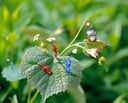
|
The background to a piece of promotional artwork for Pikmin. | |
| Vol. 6 四季・自然編
(Seasons and Nature) |
SF122 | File:Pikmin The Final Trial Island Base.png | 
|
The mountains in the area selection menu. It is a photograph of Mount Kamui and Lake Mashū. | |
| Vol. 6 四季・自然編
(Seasons and Nature) |
SF164 | File:Pikmin World Map Base.png | 
|
The main landmass in the area selection menu. It was taken in Shakotan, Hokkaido. | |
| Vol. 13 葉・葉脈編
(Leaves and Leaf Veins) |
SM054 | 
|
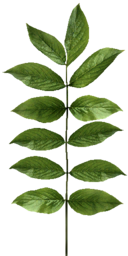
|
Several plants found in the The Impact Site. It is a photograph of an elderberry's leaves. | |
| Vol. 16 皮・年輪編
(Wood Textures) |
SQ166 | 
|
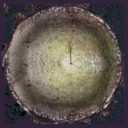
|
The base of several wooden stumps in The Distant Spring. | |
| Vol. 21 宇宙・惑星編
(Space and Planets) |
SV001 | 
|

|
PNF-404, in the Nintendo Player's Guide of Pikmin. It is a photograph of Earth. It is also used for Koppai in the opening of Pikmin 3. | |
| Vol. 21 宇宙・惑星編
(Space and Planets) |
SV002 | 
|
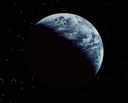
|
PNF-404, during the credits of Pikmin. It is a photograph of Earth. | |
| Vol. 21 宇宙・惑星編
(Space and Planets) |
SV007 | 
|

|
PNF-404, during the good ending cutscene of Pikmin. It is a photograph of Earth. | |
| List of Sozaijiten textures used in Pikmin 2 | |||||
|---|---|---|---|---|---|
| Volume | Name | Source Image | Texture/Screenshot | Description | |
| Vol. 1 テクスチャー・石編
(Stone Textures) |
SA068 | 
|
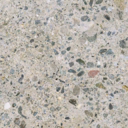
|
Stone used around the geyser in the 2nd sublevel of the Emergence Cave. | |
| Vol. 2 紙・布・木編
(Paper, Cloth, and Wood Textures) |
SB108 | 
|

|
The fabric for the Five-man Napsack. | |
| Vol. 5 空・雲編
(Sky and Clouds) |
SE074 | 
|
The fog in the area selection menu of Pikmin 2. | ||
| Vol. 6 四季・自然編
(Seasons and Nature) |
SF122 | File:Pikmin The Final Trial Island Base.png | 
|
The mountains in the area selection menu. It is a photograph of Mount Kamui and Lake Mashū. | |
| Vol. 6 四季・自然編
(Seasons and Nature) |
SF164 | File:Pikmin World Map Base.png | 
|
The main landmass in the area selection menu. It was taken in Shakotan, Hokkaido. | |
| Vol. 6 四季・自然編
(Seasons and Nature) |
SF190 | 
|

|
Snow used for the Valley of Repose's background image. The image was taken on a beach in Otaru. | |
| Vol. 6 四季・自然編
(Seasons and Nature) |
SF191 | 
|

|
Trees used for the Valley of Repose's background image. The image was taken in Shikaoi, Hokkaido. | |
| Vol. 8 壁・土編
(Walls and Soils) |
SH071 | 
|

|
The walls of a cave background in Pikmin 2 , build. It has been flipped horizontally.
| |
| Vol. 8 壁・土編
(Walls and Soils) |
SH096 | 
|
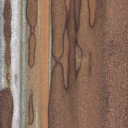
|
Several metallic sheets buried in the ground that appear in the Perplexing Pool. | |
| Vol. 13 葉・葉脈編
(Leaves and Leaf Veins) |
SM074 | 
|

|
Large leaves in the Perplexing Pool. It is a photograph of Galax. | |
| Vol. 16 皮・年輪編
(Wood Textures) |
SQ166 | 
|

|
The base of several wooden stumps in the Perplexing Pool and a unique cave unit seen in the Hole of Heroes. | |
| Vol. 21 宇宙・惑星編
(Space and Planets) |
SV161 | 
|

|
A galaxy that can be seen in the Debt Repayment Cinema in Pikmin 2. It is a photograph of a spiral galaxy in the Pegasus constellation. | |
| Vol. 21 宇宙・惑星編
(Space and Planets) |
SV186 | 
|

|
Nebulae that can be seen in the Opening and Debt Repayment Cinemas in Pikmin 2. It is a photograph of the Orion Nebula. | |
| Vol. 21 宇宙・惑星編
(Space and Planets) |
SV187 | 
|

|
Nebulae that can be seen in the Opening and Debt Repayment Cinemas in Pikmin 2. It is a photograph of the Orion Nebula. | |
| Vol. 24 大理石編
(Marbles) |
SY089 | 
|

|
The texture for the Priceless Statue and Worthless Statue. It is an image of Grigio Carnico marble. For the latter treasure, the colors have been inverted. | |
| Vol. 53 木目・組木・あじろ編
(Grain, Interlocked and Braided Wood) |
CD123 | 
|

|
The texture used for the Shock Therapist's wooden base. It is an image of rosewood. | |
| Vol. 53 木目・組木・あじろ編
(Grain, Interlocked and Braided Wood) |
CD138 | 
|

|
A cave background in Pikmin 2 , flooring. It is an image of 5-inch white oak flooring. Several planks of wood were stretched.
| |
Bakku no Oni
Bakku no Oni (バックの鬼?, lit.: "Background Demon") is a series of stock image libraries that was distributed by A&P CO-ORDINATOR JAPAN. Its volumes were themed after colors or emotions. Images from "Bakku no Oni SABI 2" were often used as textures for the caves in Pikmin 2.
| List of Bakku no Oni textures used in Pikmin 2 | |||||
|---|---|---|---|---|---|
| Volume | Name | Source Image | Texture/Screenshot | Description | |
| 寂2
(SABI 2) |
RUST-08 | 
|

|
Used for a small metal plate in the center of the room_hitode3x3_5_metal cave unit.
| |
| 寂2
(SABI 2) |
RUST-27 | 
|
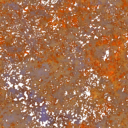
|
Used for the dark brown metal in many metallic cave units, and the top of the bucket in the room_big_kusachi garden cave unit.
| |
| 寂2
(SABI 2) |
RUST-34 | 
|
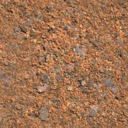
|
Used as the center room's floor in room_white14x12_metal, a cave unit in sublevel 3 of the White Flower Garden.
| |
| 寂2
(SABI 2) |
RUST-36 | 
|
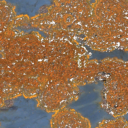
|
The blue rusted metal in nearly every metal cave unit. | |
| 寂2
(SABI 2) |
RUST-41 | 
|
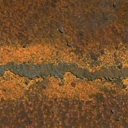
|
Used in the small path in room_white14x12_metal, and as the circular rim in the Titan Dweevil's arena, room_oootakara_tile.
| |
VisualDisk
VisualDisk is a series of stock image libraries that was distributed by dizáin. Similar in scope to Sozaijiten, there was a very large amount of volumes released and high variety in its content. However, it is used sparsely in Pikmin 2.
| List of VisualDisk textures used in Pikmin 2 | |||||
|---|---|---|---|---|---|
| Volume | Name | Source Image | Texture/Screenshot | Description | |
| M-02 Metals | M2_01 | 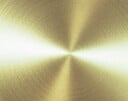
|
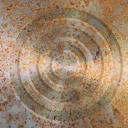
|
Used for the top of the bucket in the room_big_kusachi garden cave unit. It is mixed with "RUST-27" from Bakku no Oni SABI 2.
| |
| M-10 Leaves | M10_05 | 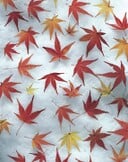
|
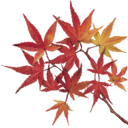
|
Used for various autumn leaves on Pikmin 2's title screen, and in the intro for the Wistful Wild when landing in the area for the first time. | |
| M-10 Leaves | M10_43 | 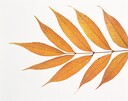
|
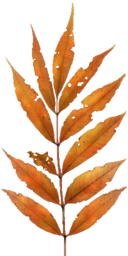
|
Used for several plants in the Wistful Wild. The leaves have been edited to look like they are decaying. | |
Audio
Similar to graphics, creating game audio often involves the sampling of various sound libraries. The games within the Pikmin series are a good example, where the vast majority of sounds can be sourced back to a number of different commercially-released products. These products are used to create the individual instrument samples and sound effects in the games, as well as long pieces of streamed music. All of the music in Pikmin, Pikmin 2, and Pikmin 3 use audio from digital instruments and synthesizers; instances of musicians performing live on real acoustic instruments are highly uncommon in the games. The new music composed by Babi for Pikmin 3 Deluxe is one of the very few occasions where this was done.[2]
Since there is a history of many different composers and sound effect programmers contributing to the games, there is a large variety of synthesizers and sample libraries that have been used. Listed below are all of these currently known products. A detailed list of the specific songs they are used in can be viewed here.
| List of products and sources used for music | |||||||||
|---|---|---|---|---|---|---|---|---|---|
| Product | Image | Year | Format | Used By | |||||
| Kurzweil K2500R |  |
1996 | Hardware synthesizer | Hajime Wakai | Used | Used | Used | Used | Absent |
| Roland SC-88 |  |
1994 | Hardware synthesizer | Hajime Wakai | Used | Used | Used | Absent | Absent |
| Yamaha S90 | 2002 | Hardware synthesizer | Kazumi Totaka | Absent | Used | Absent | Absent | Absent | |
| KORG TRITON STUDIO | 1999 | Hardware synthesizer | Asuka Hayazaki | Absent | Absent | Used | Absent | Absent | |
| Yamaha PLG150-DX | 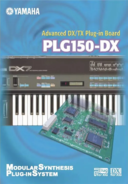 |
1999 | Plug-in board | Kazumi Totaka | Absent | Used | Absent | Absent | Absent |
| Yamaha PLG150-VL | 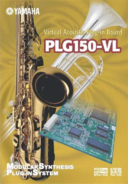 |
1999 | Plug-in board | Kazumi Totaka | Absent | Used | Absent | Absent | Absent |
| InVision Lightware 1 | 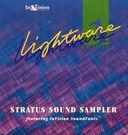 |
1989 | AKAI CD-ROM | Hajime Wakai | Absent | Used | Absent | Absent | Absent |
| Series 4000 Hollywood Sound FX | 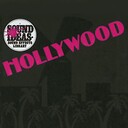 |
1989 | Audio CD-ROM | N/A | Absent | Used | Used | Absent | Absent |
| SampleCell II CD-ROM Library | 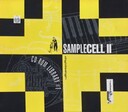 |
1991 | SampleCell CD-ROM | N/A | Used | Used | Absent | Absent | Absent |
| Series 6000 The General Sound FX | 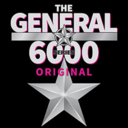 |
1992 | Audio CD-ROM | N/A | Absent | Used | Used | Absent | Absent |
| Warner Bros. Sound FX | 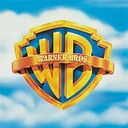 |
1992 | Audio CD-ROM | N/A | Absent | Used | Absent | Absent | Absent |
| Drums + Percussion Special Edit. | 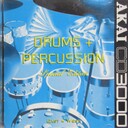 |
1992 | AKAI CD-ROM | Hajime Wakai | Absent | Used | Absent | Absent | Absent |
| ZERO-G Ambient Volume 2 | 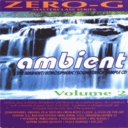 |
1993 | AKAI CD-ROM | Hajime Wakai | Absent | Used | Absent | Absent | Absent |
| Orchestral Colours |  |
1993 | AKAI CD-ROM | Hajime Wakai | Absent | Used | Absent | Absent | Absent |
| Synclavier Sampler Library Perc+ | File:ILIO Synclavier Sampler Library Percussion World and Orchestral.jpeg | 1994 | AKAI CD-ROM | Kazumi Totaka | Absent | Used | Absent | Absent | Absent |
| Bass Legends | 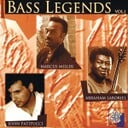 |
1994 | CD-ROM | Kazumi Totaka | Absent | Used | Absent | Absent | Absent |
| Ultra Gigapack | 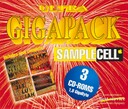 |
1995 | SampleCell CD-ROM | N/A | Used | Used | Absent | Absent | Absent |
| Supreme Beats |  |
1995 | CD-ROM | N/A | Used | Used | Used | Absent | Absent |
| Hollywood Edge Animal Trax |  |
1996 | Audio CD-ROM | N/A | Absent | Absent | Used | Absent | Absent |
| Ethnic Flavours | 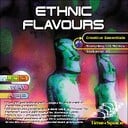 |
1996 | Audio CD-ROM | N/A | Absent | Absent | Used | Absent | Absent |
| Advanced Orchestra | 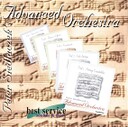 |
1997 | AKAI CD-ROM | N/A | Absent | Used | Used | Absent | Absent |
| Voices of Istanbul | 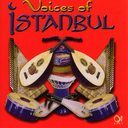 |
2000 | Audio CD-ROM | Kazumi Totaka | Absent | Used | Absent | Absent | Absent |
| Symphonic Orchestra |  |
2003 | Software instrument | Asuka Hayazaki | Absent | Absent | Used | Used | Absent |
| Ra |  |
2005 | Software instrument | Asuka Hayazaki | Absent | Absent | Used | Absent | Absent |
| Stormdrum 2 |  |
2007 | Software instrument | Asuka Hayazaki | Absent | Absent | Used | Absent | Absent |
| Omnisphere |  |
2008 | Software instrument | Asuka Hayazaki | Absent | Absent | Used | Absent | Absent |
| KONTAKT Factory Library |  |
2010 | Software instrument | Atsuko Asahi | Absent | Absent | Used | Absent | Absent |
| HALion One |  |
2006 | Software instrument | Atsuko Asahi | Absent | Absent | Used | Absent | Absent |
| Logic Pro X |  |
2004 | DAW | Hajime Wakai | Absent | Absent | Used | Absent | Absent |
Kurzweil K2500
The Kurzweil K2500 is a synthesizer manufactured by Kurzweil Music Systems in 1996. The Kurzweil K2500R is its rackmount variant, and the specific model that was owned and used by Hajime Wakai in his work. Typically, rackmount versions of synthesizers are functionally identical, but they lack the physical keyboard. This makes them more compact and easy to cram into a studio space; however, it is intended that they be connected to an external MIDI device, such as a musical keyboard, a computer, or some other MIDI-compatible instrument in order to use them.
A lesser-known synthesizer, it is the signature synth of Hajime Wakai, and a staple of the audio design in the Pikmin series as a whole.
It is used in Pikmin, Pikmin 2, Pikmin 3, Pikmin 3 Deluxe, and Pikmin 4. In some parts of Pikmin 3, Asuka Hayazaki uses this synthesizer. Soshi Abe uses samples from it for Pikmin 3 Deluxe and Pikmin 4.
K25 FARM
By default, the Kurzweil K2500 comes with 200 instrument presets (also known as programs), but this amount is easily expandable. Users can create their own custom programs using various waveforms built into its synth engine, or load in programs from an external source using the synthesizer's floppy drive or SCSI connection.
The purchase of a new K2500 included several floppy disks, one of which contained the "K25 FARM". On it, is a collection of several hundred brand new, unique programs for the K2500. Users can load these presets by simply inserting the disk into the K2500's floppy drive. If the floppy disk is lost or damaged, the files are still available to download for free from Kurzweil's website; keep in mind, these presets are not playable without their compatible synthesizer.
The programs from the K25 FARM are also used very often within the music and sound effects of the Pikmin games, even Pikmin 3.
Roland SC-88
The Roland SC-88 is a General MIDI-based synthesizer, manufactured by Roland in 1994. An entry in the Roland Sound Canvas series, it has 654 default instrument presets and 22 drumset presets that are designed to perfectly conform to the General MIDI standard, making it excellent for the playback of MIDI songs. It is still useful as a compositional tool; the sounds from the Roland Sound Canvas line of synthesizers are very common in video games. Compressed samples of audio from a SC-55 are even utilized for the Microsoft GS Wavetable Synth, the default "soundfont" for MIDI playback on most computers.[3]
It is used primarily in the music of Pikmin and Pikmin 2, by Hajime Wakai. Alongside the Kurzweil K2500, these two synthesizers make up the vast majority of instrument samples in those games.
Fonts
Most of the fonts used in the Pikmin games are commercially-available fonts created by Dynacomware or Fontworks. Originally, they were sold bundled together with many other typefaces and distributed on CD-ROMs, but the individual fonts are still available online. Because of their availability, usage of these fonts in other media may be mistaken as a reference to the Pikmin series.
DFCraftSumi Std W9
DFCraftSumi Std is a typeface created by Dynacomware. DFCraftSumi Std W9 is used in Pikmin, Pikmin 2, and Hey! Pikmin for the bubble-like letters that appear in some menus and cutscenes. In Pikmin 3, a modified version of this font is used.
DFPOP1 Std W3
DFPOP1 Std is a typeface created by Dynacomware. DFPOP1 Std W3 is used as the main text font in Pikmin, such as for Olimar's monologs.
Seurat Pro DB
Seurat is a typeface created by Fontworks. Seurat Pro DB is used as the main text font in Pikmin 2, as seen in the ship's dialogs and other various menu elements.
Rodin NTLG Pro DB
Rodin NTLG is a typeface created by Fontworks. Rodin NTLG Pro DB is used as the main text font in Pikmin 3 and Pikmin 3 Deluxe, such as the English text displayed on the KopPad, on-screen character dialog, and other various menu elements.
New Rodin Pro DB
New Rodin is a typeface created by Fontworks. New Rodin Pro DB is used in Pikmin 3 and Pikmin 3 Deluxe for the numbers in the countdown at sunset.
Proprietary fonts
Some text that appears in the games use fonts that are uniquely created for the Pikmin series itself.
Pikmin 3 bubble-like font
An updated variant of DFCraftSumi Std W9 is used in Pikmin 3. It highly resembles the original typeface, but many minor changes have been made to improve readability, such as making the tails of certain characters longer and their widths more consistent.
Hocotate Freight text
The logo for Hocotate Freight uses a uniquely designed font. It is alien-like, but still legible English.
Koppaite text
- Main article: Koppaite text.
In Pikmin 3 and Pikmin 4, an in-universe written language appears very frequently on technology and as a background element throughout various in-game menus. The text appears as an assortment of illegible alien symbols, but these characters are actually translatable into the 26 letters in the English alphabet, which reveal some small secrets when various instances of the text are deciphered.
References
- ^ YouTube video of footage from E3, where it is stated that some of the materials used in Pikmin are from around Shigeru Miyamoto's neighborhood (at 10:10)
- ^ Babi's response to an e-mail inquiry on Reddit
- ^ YouTube video of a live comparison between the SC-55 (via the virtual SCVA plugin) and the Microsoft GS Wavetable Synth (at 10:10)
